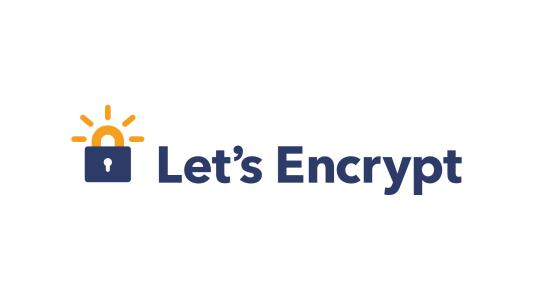Let’ s Encrypt 是一个免费的 SSL/TLS 证书发行机构, 证书有效期为90天, 到期前30内可续期,因此不需要担心费用问题。本篇将讲述启用证书的主要过程: 客户端安装、获取证书、配置Nginx、证书自动续期等。
服务器环境:
- nginx-1.10.1
- php-7.0.4
- mariadb-10.1.13
启用证书的主要过程包括:客户端安装、获取证书、配置Nginx、证书自动续期等几个方面。
客户端下载
Let’ s Encrypt客户端现已更名为certbot,客户端的地址为 GitHub 。
1
2
3
4
5
6
7
8
| #下载
wget https://github.com/certbot/certbot/archive/v0.22.2.tar.gz
#解压
tar xzvf v0.22.2.tar.gz
#进入目录
cd certbot-0.22.2
|
运行一次客户端,进行检查升级:
1
2
3
4
5
| #进入目录
cd ~/certbot
#执行检查
./certbot-auto --help
|
如果没什么问题的话,会显示帮助文档。
获取证书
申请过程中要验证绑定的域名是否属于申请人, 其原理就是申请人在域名所在的服务器上申请证书, 然后 Let’ s Encrypt 会访问绑定的域名与客户端通信成功即可通过。
验证的方式有两种,一种是停止当前的 web server 服务, 让出 80 端口, 由客户端内置的 web server 启动与 Let’ s Encrypt 通信;一种是在域名根目录下创建一个临时目录, 并要保证外网通用域名可以访问这个目录,这种方式不需要停止当前的 web server 服务。
1. 通过访问80端口方式验证
1
2
3
4
5
6
7
8
| #停止nginx
systemctl stop nginx
#获取证书, --standalone 参数:使用内置web server. --email 参数:管理员邮箱,证书到期前会发邮件到此邮箱提醒. -d 参数:要绑定的域名,同一域的不同子域都要输入.
./certbot-auto certonly --standalone --email admin@4spaces.org -d 4spaces.org -d www.4spaces.org
#启动nginx
systemctl start nginx
|
2. 通过临时目录验证
1
2
| #--webroot 参数:指定使用临时目录的方式. -w 参数:指定后面-d 域名所在的根目录, 如果一次申请多个域的, 可以附加更多 -w...-d... 这段.
./certbot-auto certonly --webroot --email admin@4spaces.org -w /usr/share/nginx/html -d 4spaces.org -d www.4spaces.org
|
完成上面的操作即可获得 SSL 证书, 保存在 “/etc/letsencrypt/live/根域名/” 目录下, 会产生 4 个文件, 其中3个证书文件, 1个私钥文件. 不要移动证书的位置, 以免续期时出现错误。关于Letsencrypt使用的更多命令参见「这里」。
配置Nginx启用https
上面你的Nginx配置并没有启用ssl,下面我们需要开始配置nginx,让其支持https。进行这一步的前提是你前面已经成功生成证书。
编辑文件/etc/nginx/conf.d/default.conf(我是通过yum的方式安装的nginx,配置目录在这里,你根据自己的情况来),进行如下配置(这个是我的完整配置):
1
2
3
4
5
6
7
8
9
10
11
12
13
14
15
16
17
18
19
20
21
22
23
24
25
26
27
28
29
30
31
32
33
34
35
36
37
38
39
40
41
42
43
44
45
46
47
48
49
50
51
52
|
server{
listen 80;
server_name 4spaces.org www.4spaces.org;
add_header Strict-Transport-Security max-age=15768000;
return 301 https://$server_name$request_uri;
}
server {
listen 443 ssl http2;
server_name 4spaces.org www.4spaces.org;
index index.php index.html index.htm;
root /usr/share/nginx/4spaces;
add_header X-Frame-Options DENY;
add_header X-Content-Type-Options nosniff;
ssl_certificate /etc/letsencrypt/live/4spaces.org/fullchain.pem;
ssl_certificate_key /etc/letsencrypt/live/4spaces.org/privkey.pem;
ssl_protocols TLSv1 TLSv1.1 TLSv1.2;
ssl_ciphers EECDH+CHACHA20:EECDH+CHACHA20-draft:EECDH+AES128:RSA+AES128:EECDH+AES256:RSA+AES256:EECDH+3DES:RSA+3DES:!MD5;
ssl_prefer_server_ciphers on;
ssl_session_cache shared:SSL:10m;
ssl_session_timeout 60m;
location / {
try_files $uri $uri/ /index.php?$args; #修改内容
}
location ~ \.php$ {
fastcgi_pass 127.0.0.1:9000;
fastcgi_index index.php;
fastcgi_param SCRIPT_FILENAME $document_root/$fastcgi_script_name;
include fastcgi_params;
}
}
|
证书续期
前面说了,证书的有效期是3个月,你可以在证书过期前的30天内,进行续期,也可以进行脚本自动续期。
方式1
进入你在下载的certbot客户端目录,执行证书续期的脚本命令如下:
renew 参数是官方推荐的续期方式, 使用这个参数会遍历 /etc/letsencrypt/live 下所有的证书, 如果证书在可续期的时间范围内(过期前30天内), 就会申请新的证书并替换原有证书, 否则跳过。
方式2
如果要指定更新某个域名的证书, 则要使用 certonly 参数, 其实和新申请证书时的命令差不多.
1
| ./certbot-auto certonly --webroot --renew-by-default --email admin@4spaces.org -w /usr/share/nginx/html -d 4spaces.org -d www.4spaces.org
|
方式3
上面两种方式,都是手动去执行的,我们可以将上面两种方式跟linux的定时任务进行结合,最终脚本如下:
- 通过端口验证的脚本
1
2
3
4
5
6
7
8
9
10
| #!/bin/sh
#停止 nginx 服务,使用 --standalone 独立服务器验证需要停止当前 web server.
systemctl stop nginx
if ! /path/to/certbot-auto renew -nvv --standalone > /var/log/letsencrypt/renew.log 2>&1 ; then
echo Automated renewal failed:
cat /var/log/letsencrypt/renew.log
exit 1
fi
#启动 nginx
systemctl start nginx
|
- 通过临时目录的脚本
1
2
3
4
5
6
7
8
9
10
11
| #!/bin/sh
# This script renews all the Let's Encrypt certificates with a validity < 30 days
if ! /path/to/certbot-auto renew > /var/log/letsencrypt/renew.log 2>&1 ; then
echo Automated renewal failed:
cat /var/log/letsencrypt/renew.log
exit 1
fi
# 需要重启nginx证书才能生效
systemctl reload nginx
|
上面两个脚本中的/path/to/certbot-auto代表你下载客户端解压后的目录,其中目录下有个certbot-auto。
选取一种方式,将对应的脚本保存为 certbotrenew.sh。
添加可执行权限
1
| chmod +x certbotrenew.sh
|
编辑 crontab 配置文件或执行 crontab -e 添加 cron 任务
我这里设置为每月28号23点执行此脚本:
1
| 0 23 28 * * /bin/sh /home/michael/certbot/certbotrenew.sh
|
保存退出即可。





